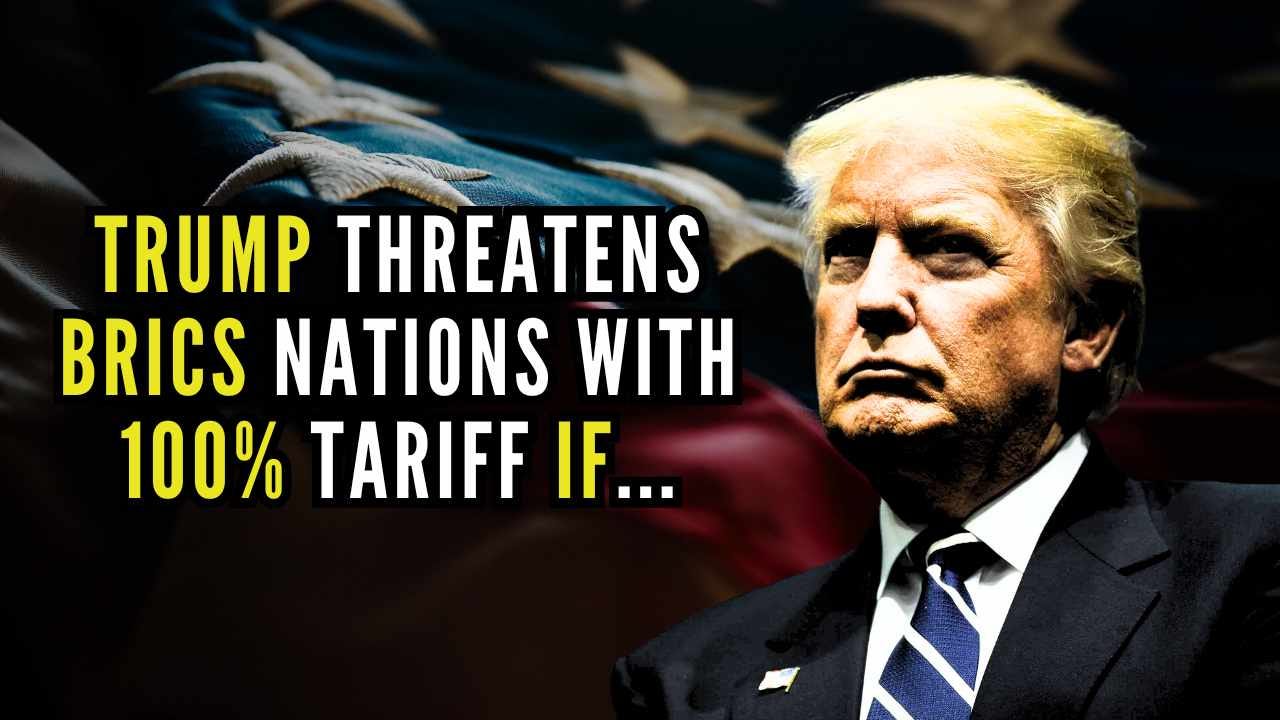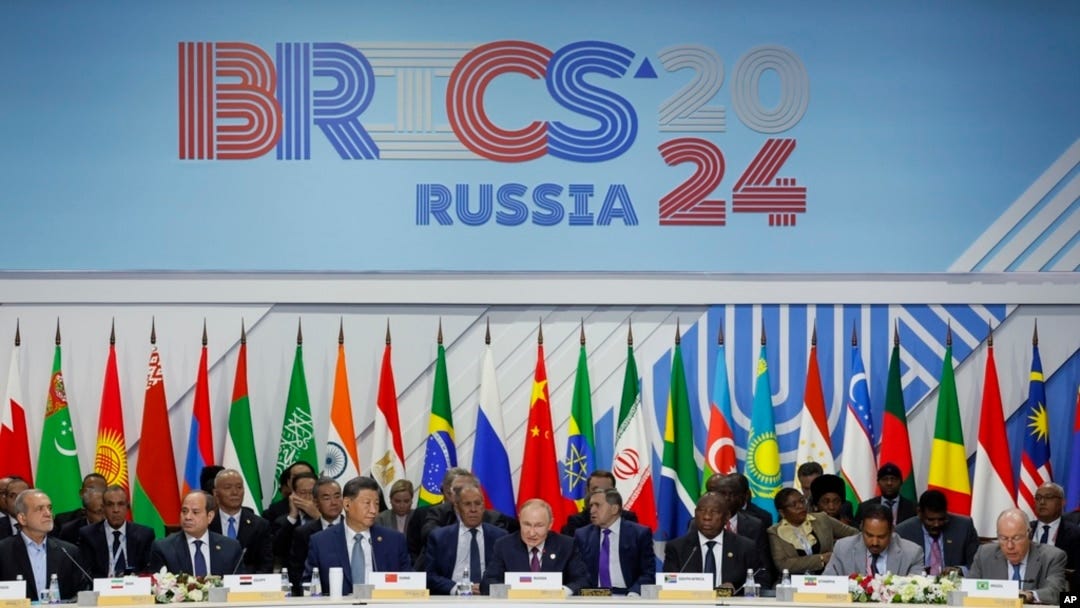On 27 February 2025 I participated in an interview by email with Khushboo Rashdan, from the South China Morning Post, who was preparing an article on the future of BRICS. Below are questions and my full answers. The final article, published on 19 March 2025, can be accessed here.
KB: With Trump threatening 100% tariffs on BRICS nations, what could this mean for the U.S. and how might the BRICS countries be impacted?
WP: Tariffs of this magnitude would in effect result in a cessation of trade. They are likely to provoke retaliatory actions, curtailing US exporters as well. Should such tariff levels be introduced, trade volumes between the US and BRICS nations could plummet by up to 90% with only a handful of items continuing to trade due to absolute advantages. BRICS nations and the US economic systems would be compelled to adjust to these new realities.
For exporters, this would mean developing new or expanding existing markets. BRICS nations are well placed to achieve this, and the speed with which each BRICS member can adjust will depend on industry structure and trade exposure to the US market. With domestic fiscal support, further coordination amongst BRICs nations and streamlining of bilateral and multilateral trade governance frameworks, BRICS nations collectively can be expected to fully compensate for the loss of the US market within 2.5 years. US exporters likely would need to find alternative markets, and in large part adjust within 4 years.
For American importers the adjustment will be less smooth in some areas, as BRICS suppliers (particularly those from China) are not as easily substituted. In some product categories, alternative supply channels could take up to a decade to fully develop (and perhaps longer). In other areas, there are substitutes available but at higher costs. Capital goods and intermediate inputs are the most obvious examples. For the US, the likely effect of the adjustment process will be a shift to a higher cost operating plateau overall.
KB: How far along are BRICS countries in the process of de-dollarization? While there seems to be a general consensus, countries like China and Russia seem more eager. Could this create tension with India, and is New Delhi truly interested in moving away from the USD as it could make yuan more important? Some blame India of playing the double game - getting close to the US and balancing China in BRICS
WP: The US dollar is an IOU backed by the US Government, on the promise that it can be used to exchange for things that the US produces or as available. Provided that it is a safe, reliable and low cost medium of exchange, there is no reason for it to not be used as a medium of exchange. But that’s the point; it is not as safe, reliable or economical these days and there are alternatives. The issue isn’t one of de-dollarisation per se, it’s one of an evolution towards currency multipolarity in the name of enhanced safety, reducing risks and reducing costs.
BRICS countries are well advanced on the pathway to currency multipolarity. The institutions are already in place - bank-to-bank bilateral currency swap arrangements, inter-bank messaging systems separate to SWIFT, payments systems integration at a technical level, digital currency initiatives and the ongoing work in relation to BRICS Clear. Russia is already transacting over 90% of its trade with China in Rouble or RMB, and over 70% trade with ASEAN nations in assorted national currencies. Over 50% of China’s trade is now settled in RMB. The world has simply evolved because the fundamental contours of production and resource capacity and the patterns of trade have changed over the past 40 years.
If trade with the US is severely disrupted due to tariffs imposed by Washington, then the utility of the USD is reduced. This compounds the risks that have grown around the USD through persistent weaponisation. These are real risks and countries around the world are wisened up to them.
Multipolarity doesn’t impose an “us versus them” framework. Countries that are operating within a multipolar frame quite naturally work with all countries where there are mutual benefits.
KB: Trump recently claimed that BRICS is “dead.” Is this true, or could the group still gain influence as Trump intensifies pressure on countries to align with his vision? Can BRICS unite against such a formidable figure?
WP: Reports of BRICS’ death are frankly an exaggeration, to paraphrase Mark Twain. As Trump threatened tariffs and pronounced BRICS’ demise, the BRICS Brazil 2025 secretariat launched the official website for its period of custodian responsibility, issued a vision document and sherpas have already met on a raft of key issues to progress agreed agenda items. The more the US seeks to ‘divide’ and ‘pressure’ the more likely it is that BRICS nations will consolidate their collaboration.
The US is simply not as important a trading country as it once was, and BRICS nations can adapt and compensate. Organic growth in global trade without the US is taking place faster than US trade is growing. Unsurprisingly the US’ contribution to total global trade has continued to diminish as the years have gone by, to now be about 15% and falling. It simply doesn’t have the leverage that it once did. The failure of the full-frontal sanctions war in Russia and assorted prohibitions and trade impediment measures targeted at China over the past decade have simply failed to dent the growth of these two economies, and has failed to stymie their respective abilities to expand their trading footprints.
KB: Trump seems to be aligning with Putin and discussing potential meetings with China. How could these shifts impact the future of BRICS? Will Russia and China become less invested in BRICS if they secure favourable deals with the U.S.?
WP: This framing under-estimates the complexity of global geopolitics, and reduces it to schoolyard ‘games’. BRICS has been and continues to be pivotal to how both China and Russia approach the unfolding multipolar world. They have each, in their own ways, and also through alignment, curated a perspective on multipolarity that emphasises indivisible security on the one hand, and non zero-sum engagement with others on the other. While the US is framing multipolarity as a return to ‘great power rivalry’, both China and Russia have framed multipolarity as a return to the multilateralism envisaged when the UN was founded, but which was undermined by the so-called US dominated ‘rules based order’.
KB: BRICS has recently expanded to include countries like Saudi Arabia, the UAE, and Iran. Despite their differences, can these nations work together to maintain BRICS’ relevance, especially in light of Trump’s policies regarding Gaza?
WP: The point is that these nations understand how to find commonality while acknowledging the existence of difference. This is a fundamental philosophical posture as much as it is a practical question. The west views the world through an ‘either / or’ lens; it is clear that non-western nations view the multipolar world through a lens anchored by the notion of ‘and’. BRICS is actually more relevant than ever. Its expanded membership (full and affiliated) brings a combined economic heft in excess of the G7, represents around 45% of the world’s GDP (on nominal terms) and over 50% of the world’s population.
Put plainly, the US is a major global power but it’s not the only show in town. The world in 2025 isn’t the world of 2016, let alone the world of 1991.
KB: Where do you see BRICS fitting in with the current global developments — such as the USAID freeze, education, health, climate change, or even peacebuilding in Gaza, Ukraine?
WP: BRICS is first and foremost an economic development network. It will continue to focus on the economic development priorities of its members, building the institutions necessary to enable development to take place so as to strengthen national sovereignty. BRICS’ focus on development will necessarily cut across concerns related to climate change, capacity building (through education and training), improved health care and such like. A clean energy-enabled development pathway remains an attractive model that combines energy sovereignty with a viable pathway to technology adoption and industrial development.
BRICS is a ‘steady as she goes’ kind of institution. Its operating style is focused on the work needed to bring different members together, promote dialogue as a way of framing consensus approaches that support coordination and collaboration, and step-by-step deliver results on the ground. In this regard, it will continue to be one of the stable pillars in the global economic institutional fabric, providing member nations and those that interact with them a clear focal point of stable, dependable engagement.
KB: How do you see India and China competing for influence within the BRICS? While they've been countering each other over the years, do you think Modi’s recent trade concessions and growing ties with the U.S. will make India's intentions more ambiguous as it moves closer to the U.S.?
WP: India's intentions are clear; they have a sense of Indian foreign policy modus operandi that aims to be 'friends with all'. This has long been part of the tradition since the end of WW2. India also has a clear sense of its 'national interest', which revolves around ambitions of industrial development and securing a sphere of security within its immediate neighbourhood. The ructions in Bangladesh won't help, and India is alert to the role the US played in this. It is erroneous to interpret India's interactions with one state (e.g., the US) at any moment in time as indicative of it moving "closer" to the U.S. India buys military products from Russia; it has a JV with Russia to produce missiles; it buys large amounts of oil from Russia, and yet, the obsession is its periodic meetings with the US as somehow indicative of a move in one direction and not the other. Or how about India and China resolving a pathway to addressing border disputes? Does this mean that India is moving "closer" to China? This is not what 'great states' do.
Influence amongst nations comes from the material and non-material connections that bind nations together. Call that hard economic power and soft cultural power if you will. India can and will have a strong voice amongst the BRICS nations, but so will the other BRICS nations. Why is this always pitted as a China v India question? Multipolarity doesn't work that way. So, I think the framing of the question in these 'bi-modal' sporting contest type of terms is not very helpful in understanding how states actually frame their interests and approaches, and how they interact with each other.






